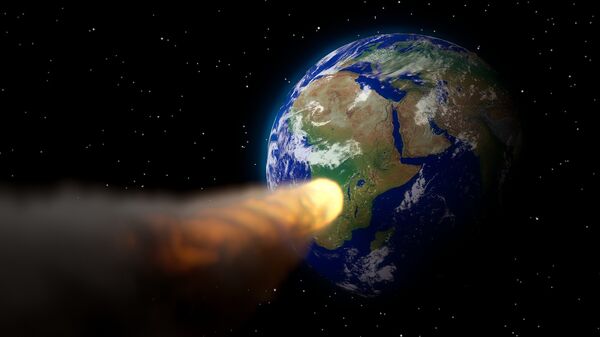With Asteroid Day looming on the horizon, the European Space Agency has launched a series of tweets that explain the “potentially risky sides” of other type of cosmic wanderers that might, in theory, pose a threat to our planet – comets.
As ESA explains, the biggest threat posed by a comet or an asteroid impact comes from an atmospheric explosion "which occurs before any material touches the ground and creates a shock wave that is responsible for most of the damage".
But while comets are less dense that asteroids and thus "carry less energy" for a given diameter, "most comets are in higher-eccentricity and inclination orbits, resulting in much higher relative velocities with respect to Earth", which, in turn, means that they will have a lot more kinetic energy that asteroids.
Comets are less dense than asteroids, therefore for a given diameter they are also less massive and carry less energy. However, most comets are in higher-eccentricity and inclination orbits, resulting in much higher relative velocities with respect to Earth
— ESA Operations (@esaoperations) June 19, 2020
📸Orbit of Comet 67P pic.twitter.com/a4x5CL6YYH
"Therefore, an average comet of a given diameter will likely cause more damage than an average asteroid of the same size", the ESA warns.
Therefore, an average comet of a given diameter will likely cause more damage than an average asteroid of the same size#AsteroidDay#SpaceCare
— ESA Operations (@esaoperations) June 19, 2020
📸Halley's Comet, 1910 pic.twitter.com/Own3ujjAD5
The space agency notes that while no "discovered comet has ever impacted Earth", the same does not necessarily apply to "cometary material", as one theory suggests that the legendary Tunguska event of 1908 was caused by "a comet, mostly made of ice, which did not survive long on the ground".
The Tunguska impact released a lot of energy but left no material on the ground. One of the leading theories for the absence of solid mass was that it was caused by a comet, mostly made of ice, which did not survive long on the ground#SpaceCare
— ESA Operations (@esaoperations) June 19, 2020
📸Comet Swan, Gerald Rhemann pic.twitter.com/THxkWUVNXm
"Of course, most meteors are generated by tiny fragments of comets, so in a certain sense they do impact us every year", ESA added.
Since we don't have any actual comet sample in a lab, it's hard to know for sure. Of course, most meteors are generated by tiny fragments of comets, so in a certain sense they do impact us every year.
— ESA Operations (@esaoperations) June 19, 2020
📸Perseid meteor shower, associated with the comet Swift–Tuttle#SpaceCare pic.twitter.com/mkQS4dGegu
Asteroid Day is a global event that was launched in 2014 and is observed annually on 30 June – the anniversary of the Tunguska event.

